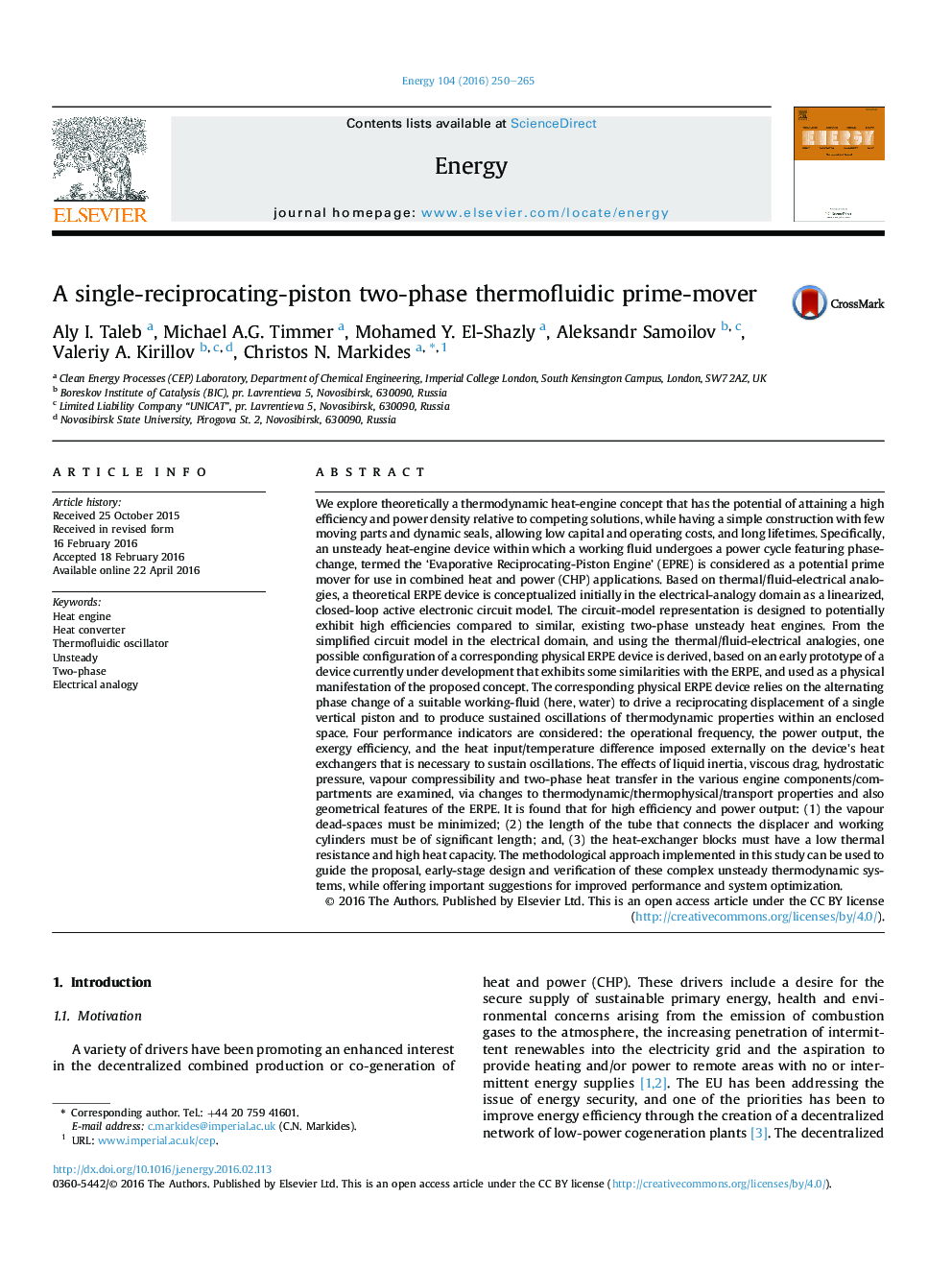| کد مقاله | کد نشریه | سال انتشار | مقاله انگلیسی | نسخه تمام متن |
|---|---|---|---|---|
| 8073765 | 1521444 | 2016 | 16 صفحه PDF | دانلود رایگان |
عنوان انگلیسی مقاله ISI
A single-reciprocating-piston two-phase thermofluidic prime-mover
ترجمه فارسی عنوان
نخستوزیر تک فاز دو فاز تری فلوئیدیک-پیستونی مجزا
دانلود مقاله + سفارش ترجمه
دانلود مقاله ISI انگلیسی
رایگان برای ایرانیان
کلمات کلیدی
موتور گرمایی، مبدل حرارتی، نوسانگر حرارتی، ناپایا، دو مرحله ای قیاسی الکتریکی،
موضوعات مرتبط
مهندسی و علوم پایه
مهندسی انرژی
انرژی (عمومی)
چکیده انگلیسی
We explore theoretically a thermodynamic heat-engine concept that has the potential of attaining a high efficiency and power density relative to competing solutions, while having a simple construction with few moving parts and dynamic seals, allowing low capital and operating costs, and long lifetimes. Specifically, an unsteady heat-engine device within which a working fluid undergoes a power cycle featuring phase-change, termed the 'Evaporative Reciprocating-Piston Engine' (EPRE) is considered as a potential prime mover for use in combined heat and power (CHP) applications. Based on thermal/fluid-electrical analogies, a theoretical ERPE device is conceptualized initially in the electrical-analogy domain as a linearized, closed-loop active electronic circuit model. The circuit-model representation is designed to potentially exhibit high efficiencies compared to similar, existing two-phase unsteady heat engines. From the simplified circuit model in the electrical domain, and using the thermal/fluid-electrical analogies, one possible configuration of a corresponding physical ERPE device is derived, based on an early prototype of a device currently under development that exhibits some similarities with the ERPE, and used as a physical manifestation of the proposed concept. The corresponding physical ERPE device relies on the alternating phase change of a suitable working-fluid (here, water) to drive a reciprocating displacement of a single vertical piston and to produce sustained oscillations of thermodynamic properties within an enclosed space. Four performance indicators are considered: the operational frequency, the power output, the exergy efficiency, and the heat input/temperature difference imposed externally on the device's heat exchangers that is necessary to sustain oscillations. The effects of liquid inertia, viscous drag, hydrostatic pressure, vapour compressibility and two-phase heat transfer in the various engine components/compartments are examined, via changes to thermodynamic/thermophysical/transport properties and also geometrical features of the ERPE. It is found that for high efficiency and power output: (1) the vapour dead-spaces must be minimized; (2) the length of the tube that connects the displacer and working cylinders must be of significant length; and, (3) the heat-exchanger blocks must have a low thermal resistance and high heat capacity. The methodological approach implemented in this study can be used to guide the proposal, early-stage design and verification of these complex unsteady thermodynamic systems, while offering important suggestions for improved performance and system optimization.
ناشر
Database: Elsevier - ScienceDirect (ساینس دایرکت)
Journal: Energy - Volume 104, 1 June 2016, Pages 250-265
Journal: Energy - Volume 104, 1 June 2016, Pages 250-265
نویسندگان
Aly I. Taleb, Michael A.G. Timmer, Mohamed Y. El-Shazly, Aleksandr Samoilov, Valeriy A. Kirillov, Christos N. Markides,
